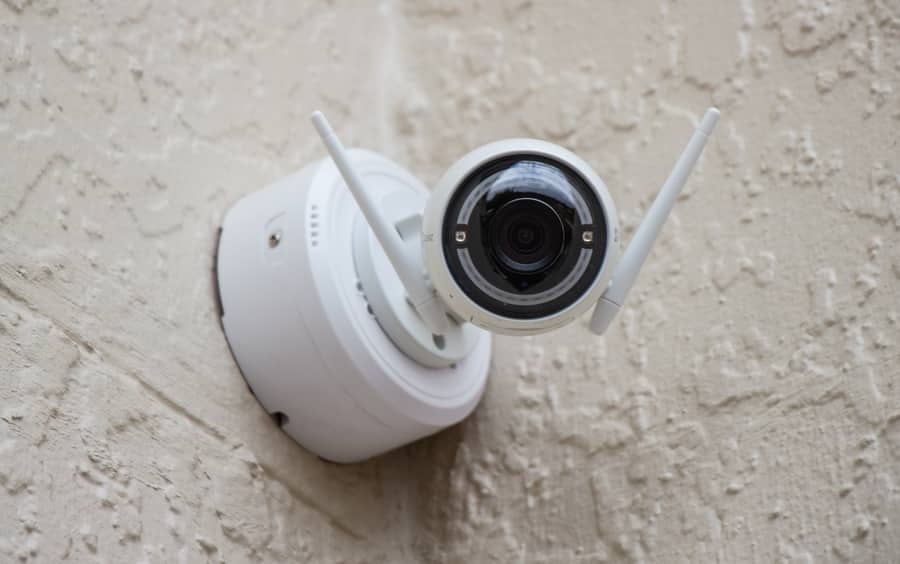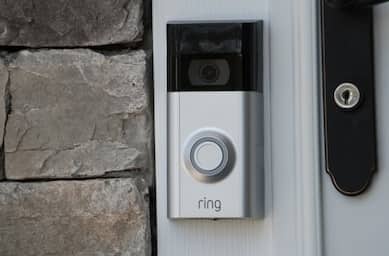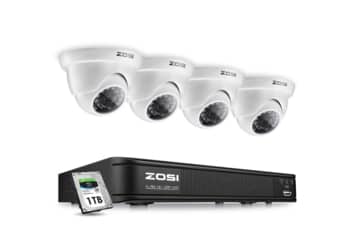
WiFi home cameras are all the craze these days. Many are so small and compact that they make great tech gifts for friends and family.
They are so popular, in fact, that Google and Amazon even bought two home wireless camera companies, Nest and Ring respectively, so that they can sell their own versions of these gadgets.
But there are still many houses where it might be hard, if not impossible to operate these wireless cameras over WiFi. So do you need WiFi for home security cameras?
WiFi is not needed to operate home security cameras. Home security cameras that do not connect to Wifi can be wired to a dedicated recording or storage device, and a viewing monitor that is part of its own system so that a router or internet service is not required.
Although some wireless benefits might be lost by installing standalone non-wifi home security cameras, they still make a solid system that can keep your area surveilled and recorded.
Below, I share the advantages and disadvantages of owning WiFi and non-WiFi home security cameras, as well as the differences in installation and operations between the two units.
WiFi Home Security Camera Features

As part of the big wave of smart home devices that are entering the market, wifi home security cameras are definitely at the forefront of the movement.
You’ve probably seen commercials on TV and all over the internet of these cameras from a range of manufacturers and retailers. They’re so accessible that I recently wrote an article covering just how easy it is to make your home a smart home.
They are affordable to start, easy to operate, and truly do not require any wires other than to power the units (but now there’s even battery powered models on the market).
It’s not just the ease of installation and their clean placement around the home that make these types of cameras so popular, but it is also its long list of features that come with them right out of the box.
For instance, Amazon’s line of Ring Video Doorbells allows you to access a live feed of the camera and receive notifications whenever anything moves in front of it, all from your smartphone, tablet, or computer.
You can also listen to the audio from the camera’s microphone, record video segments to the cloud manually or by motion-trigger, and have a two-way conversation no matter what location you are in.
That is, as long as there is WiFi that is running the camera.
With a compatible smart home assistant, you can also pull up visual of your cameras on a TV or smartphone wirelessly with the power of your voice.
Having a home security camera that connects to the internet via WiFi frees the location of the unit and where you are accessing it from.
No-WiFi Home Security Camera Features

Although WiFi cameras have become the most popular option for home security, there is still a need for cameras that do not need to run on a wireless network.
These security cameras, also known as CCTV, generally come as a whole system, with a set of cameras, a recording device like a Digital Video Recorder (DVR), hard drive, or an SD card, and the wiring to connect all the pieces together.
The ZOSI 8 Channel Video Security Camera System is a great example of an all-in-one package that includes the dome cameras, a DVR with VGA and HDMI ports to connect to a TV or computer monitor, and a hard drive to store all the visuals.
Wiring is also included in these all-in-one packages, but if you find that any of the wires are not long enough you can add extensions or longer cables at a very reasonable cost.
Depending on your needs and placement of the system, there are also home security cameras that have their own proprietary router that emits a 2.4 or 5GHZ frequency to the cameras so that the connection between the recording base and the cameras are wireless.
No additional WiFi or internet for this type of setup is needed.
A less common but alternative approach to a non-wifi system are home cameras that have cellular signal built in to the dome or the recording unit. This allows the cameras to still emit a wireless signal so that the visual can be accessed remotely by a smartphone, tablet, or computer in another location.
Installation of WiFi Cameras
The set up of home security cameras that run on WiFi are fairly straightforward.
You first want to pick the placement of the camera around the home and plug in the unit to power, unless it runs on battery.
Doorbell security cameras require an additional step because they need to be wired to power where the existing doorbell was, additional electrical help may be needed here.
Once the cameras are powered up, the rest of the installation usually requires setting up the software with a smartphone app, an online account with the manufacturer for visual recall, and a successful connection to the WiFi network.
When the picture and the recording app is set up, you should be able to start seeing visual and motion notifications right away.
Installation of Non-WiFi Cameras
The software of modern non-wifi cameras are generally built in to the DVR recording base, so there is no internet that is required to gain access to the visual of the cameras.
Most of the leg work in installing these types of home security camera systems will be in finding enough space for the DVR unit, a monitor, and the wiring to connect the power and the picture to each other.
Also, the cameras will need to be mounted, connected to power, and wired all the way back to the central DVR unit so that it receives a clear signal. This will require some planning since the wires will need to be threaded and sometimes buried depending on the application.
Once the wiring and the placement of the cameras is complete and the monitor is powered up, you should start seeing visual of the cameras and successful recording to its hard drive or storage chip.
Since there are more pieces required to install a non-WiFi home camera system, it is best to run some test video and recording right away to ensure that all the part were connected properly with a clear visual signal.
Why You Need One Over The Other
Homes that have large threshold internet plans with fast speeds and strong routers should look no further than a WiFi camera setup, especially with smart home applications becoming the norm.
However, there are many other instances where you might consider going with a non-WiFi set up.
If you have a home that has expensive, slow, or no internet connection, such as a rural town or wilderness cabin, then a standalone home camera system is a no-brainer since the visuals and the information are stored in its own DVR box.
Another benefit of non-WiFi home security cameras that are not wireless is that they cannot be remotely accessed by intruders.
Since all of the components of a non-WiFi system are hardwired, that creates an extra layer of security from internet hackers.
Home camera systems that don’t need WiFi are also not at the mercy of its wireless signal or speed.
So if you have a home network that tends to connect and disconnect wirelessly from the internet will have the same effect with WiFi security cameras since they depend on that connection too.
Non-WiFi cameras, on the other hand, only rely on the wiring, the components of the DVR system, and the monitor, so visual signal and recording is usually clear and stutter-free.
One more benefit of non-WiFi home cameras is that once you purchase and install the standalone system with the wiring, that is the only cost that you incur.
On the other hand, WiFi cameras usually require monthly fees to enable cloud storage for their recordings or live feed access, which is how the information is stored wirelessly.
Non-WiFi cameras record straight on to a storage unit like a hard drive or memory chip, so there are no monthly fees to keep access to your recordings. This can be a huge savings for you in the long run.
